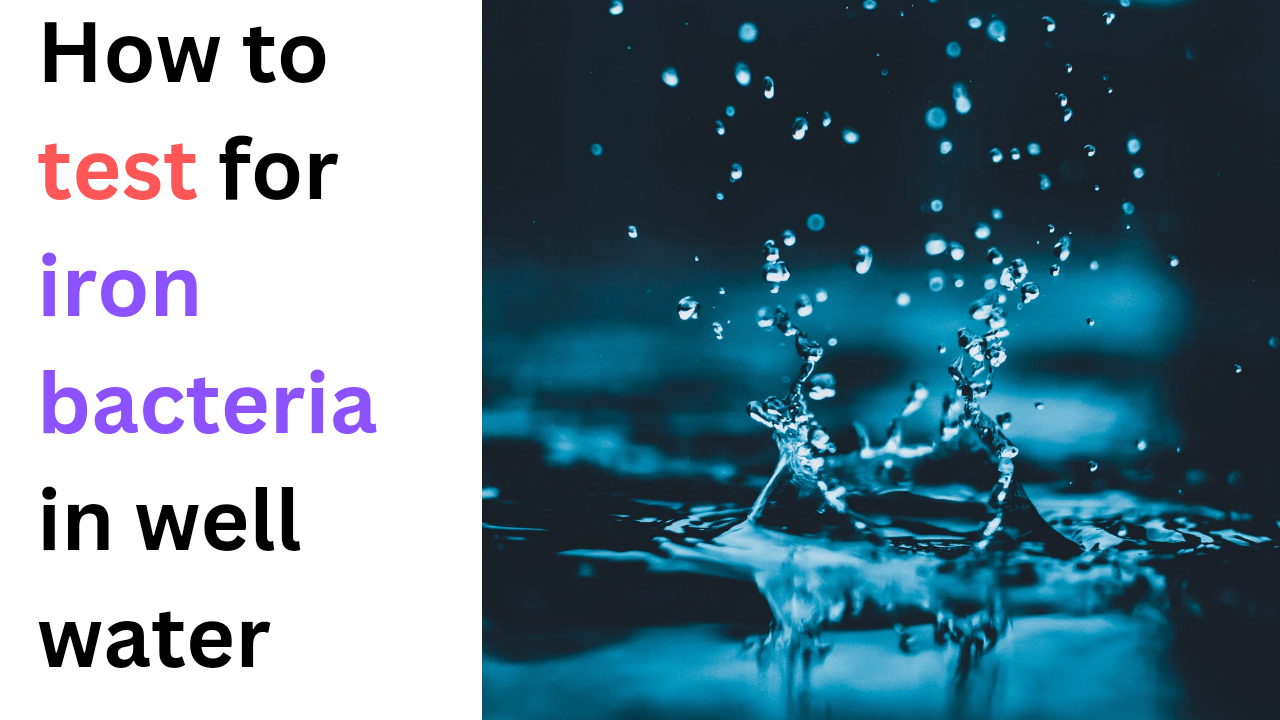Testing for iron bacteria in well water is important. It ensures water safety and quality.
Iron bacteria can cause unpleasant odors, staining, and affect the taste of water. Here’s how you can test for iron bacteria in your well water.
Here’s the five techniques you can use to test for iron bacteria in well water.
- Look for Signs of Iron Bacteria
- Laboratory Testing
- Test Kits
- Field Test for Iron Bacteria
- Water Testing Services
Look for Signs of Iron Bacteria
Before testing, you notice physical signs of iron bacteria contamination, like:
- A red, orange, or yellowish slime or film in toilet tanks, pipes, or faucets.
- Staining of sinks, tubs, laundry, and dishes with rust-like colors.
- A foul, musty, or rotten egg odor (often due to the sulfur compounds produced by iron bacteria).
- Reduced water flow in pipes due to biofilm buildup.
Laboratory Testing
The most precise way to test for iron bacteria is by sending a water sample to a certified laboratory. They will use specific techniques to detect the presence of iron bacteria in your well water. Here’s how to go about it:
- Contact a Certified Lab: Find a local water testing lab. You can also consult your local health department. They can offer recommendations on accredited labs.
- Sample Collection: Follow the lab’s instructions carefully for water sample collection to avoid contamination. Typically, this involves using a sterile container to collect a sample from the well.
- Test for Iron Bacteria: The lab will usually conduct tests such as:
- Microscopic examination to find bacteria found.
- Culturing techniques to grow and find iron bacteria from the sample.
- Iron concentration tests, as high iron levels often go with the presence of iron bacteria.
Test Kits
You can find DIY test kits to help you test for iron levels. Yet, these kits may not directly test for iron bacteria. They are more focused on measuring iron concentration in the water, which can suggest the potential for iron bacteria contamination. Here’s how you can use these kits:
- Buy a water test kit designed to measure iron levels. You can find these at hardware stores, online, or at water treatment supply stores.
- Follow the instructions provided in the kit to collect and test the water sample.
- High levels of iron in the water might show the existence of iron bacteria. However, this method won’t confirm if bacteria are here.
Field Test for Iron Bacteria (Preliminary Method)
There is a simple field test to get a sign of iron bacteria presence:
- Fill a clear container (like a glass jar) with your well water.
- Let the water sit for a few hours to overnight.
- Check for sludge or brownish slime that forms on the bottom of the jar or at the surface. This slime’s formation can show the presence of iron bacteria. These bacteria produce this biofilm when they metabolize iron.
- If you notice this slime or film, it’s a strong indicator that iron bacteria might be present in your water. However, confirmatory lab testing is needed for precise identification.
Professional Water Testing Services
If you want an expert opinion, consider hiring a well water professional or a plumber who specializes in water systems. They may use specialized equipment to test the water for contaminants, including iron bacteria.
Summary of Steps:
- Check for signs like slime, staining, or odor.
- Collect a water sample and send it to a certified lab for proper testing.
- Optionally, use a DIY kit to measure iron levels, though this won’t confirm iron bacteria.
- Consider a field test. Let water settle in a jar for a few hours. See if iron bacteria form a film.
- Consult a professional if you’re unsure about the test results or need help with remediation.
If you confirm the presence of iron bacteria, you can choose from treatment options. These options include chlorination or filtration systems to remove or manage them.
